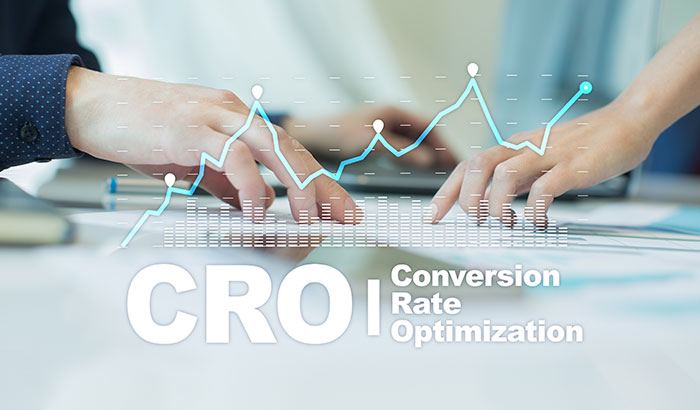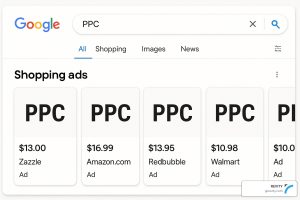You’ll know if your company is not using conversion rate optimization best practices. Your website struggles to get good quality leads, you can’t seem to justify the amount you spend on marketing for the return you receive, and your marketing efforts generally are unpredictable.
Conversion rate optimization is the process of increasing the percentage of website visitors who take a desired action, such as making a purchase or filling out a contact form. It’s a crucial aspect of digital marketing that can help you improve your bottom line and get more out of your marketing budget.
Whether you’re new to the world of digital marketing or just looking to brush up on your skills, this guide will provide you with a solid foundation for understanding and implementing CRO strategies.
What Is CRO?
Conversion Rate Optimization (CRO) is the process of increasing the percentage of website visitors who take a desired action, such as making a purchase, filling out a contact form, or subscribing to a newsletter. The conversion rate is typically calculated as the number of conversions divided by the number of website visitors.
The ultimate objective of CRO is to optimize a website in order to increase the number of conversions and the conversion rate. This can be achieved through various strategies such as A/B testing, user experience optimization, and improving the website’s design and layout.
By focusing on the customer journey and identifying areas of improvement, businesses can increase their chances of converting website visitors into customers. CRO is important because it can lead to increased revenue, better ROI on marketing spending, and a stronger and more substantial online presence.
Why Is CRO Important
One of the main benefits of conversion rate optimization is that it can help businesses achieve a higher return on investment (ROI) on their marketing spending. Businesses can make more effective use of their marketing budget by optimizing the website to convert more visitors into customers.
Conversion rate optimization can help generate more qualified leads, which means less time vetting low-quality leads and more time and resources spent converting high-quality leads into customers.
CRO can help improve a business’s bottom line in other ways, such as:
- By improving the user experience on a website, businesses can increase the likelihood of visitors taking a desired action, such as making a purchase.
- By A/B testing different elements of a website, such as headlines and calls to action, businesses can optimize their website for maximum conversion rates.
- By conducting user research, businesses can gain valuable insights into what their customers want and need, which can lead to more effective marketing strategies and higher conversion rates.
With the rise of e-commerce and online shopping, CRO has become increasingly crucial for businesses of all sizes. In today’s digital landscape, consumers have more options than ever before, and businesses need to find ways to stand out and capture their attention.
Conversion rate optimization can help businesses to do this by providing a better user experience, more effective messaging, and a higher conversion rate. Without CRO, businesses risk losing potential customers to competitors who have optimized their website for conversions.
What Pages Need CRO?
When it comes to CRO, certain pages of a website are more important than others. These include landing pages, home pages, and product pages.
- Landing pages are the first point of contact for many website visitors, and they’re often used to introduce a product or service and encourage visitors to take a desired action.
- Home pages are the main hub of a website and often serve as a starting point for visitors.
- Product pages provide detailed information about a specific product or service and are often used to convert website visitors into customers.
One way to identify which pages of a website need CRO is to look for pages that are specifically intended to get website visitors to take a desired action. These pages typically include landing pages, home pages, product pages, and other pages that are designed to convert visitors into customers.
Really, any page of a website that has a low conversion rate or a high bounce rate may be in need of CRO.
A website’s design and layout can significantly impact conversion rates. If things aren’t placed where customers would intuitively think to place them, or if the design and layout are confusing, it can lead to visitors leaving the website without taking a desired action. On the other hand, if the design and layout are intuitive and easy to navigate, it can increase the likelihood of visitors taking a desired action. Additionally, the right color scheme, typography, and images can also affect the conversion rate. It’s important to keep in mind that a website’s design and layout are key components of CRO and should be optimized to increase conversion rates.
What Are Some Conversion Rate Optimization Best Practices?
If you are new to digital marketing, there are some conversion rate optimization best practices you should definitely follow:
Look at the Big Picture
When it comes to CRO, businesses need to take a holistic approach and consider the entire customer journey. This means looking at the customer’s experience from the moment they land on the website to the point of conversion.
By understanding the entire customer journey, businesses can identify areas of improvement and optimize the website to increase conversion rates.
Make CTA’s Clear
One of the most essential elements of CRO is the call-to-action (CTA) button. A CTA is a button or link on a website that encourages visitors to take a desired action.
To be effective, a CTA should be clear and easy to understand. Tips for crafting clear and compelling CTAs include using action-oriented language, making the button stand out visually, and placing it in a prominent location on the page.
Split Test Messaging
One of the best ways to optimize messaging on a website is through A/B testing.
A/B testing involves creating two versions of a page, each with a different headline, body copy, or other elements, and then comparing the results to see which version performs better. This allows businesses to test different versions of a page and see what messaging resonates best with their target audience.
Split Test Button Positioning
The positioning of CTA buttons on a website can have a significant impact on conversion rates.
To optimize button positioning, businesses can use A/B testing to test different button locations on a page and see which location results in the highest conversion rate. Tips for optimizing button positioning include placing the button above the fold, making it stand out visually, and positioning it in an intuitive location.
Improve Your Conversions With Revity Marketing
Understanding a concept like conversion rate optimization doesn’t always make it easy to put into practice. That is why we recommend giving it some practice. Experimentation is the road to improvement.
If you don’t feel inclined to try it yourself, we are more than willing to help you out. Our team of professionals is well-situated to help you get a higher return on your investment and increase your conversions.
Contact us today to learn more about how you can improve your website through CRO.
































